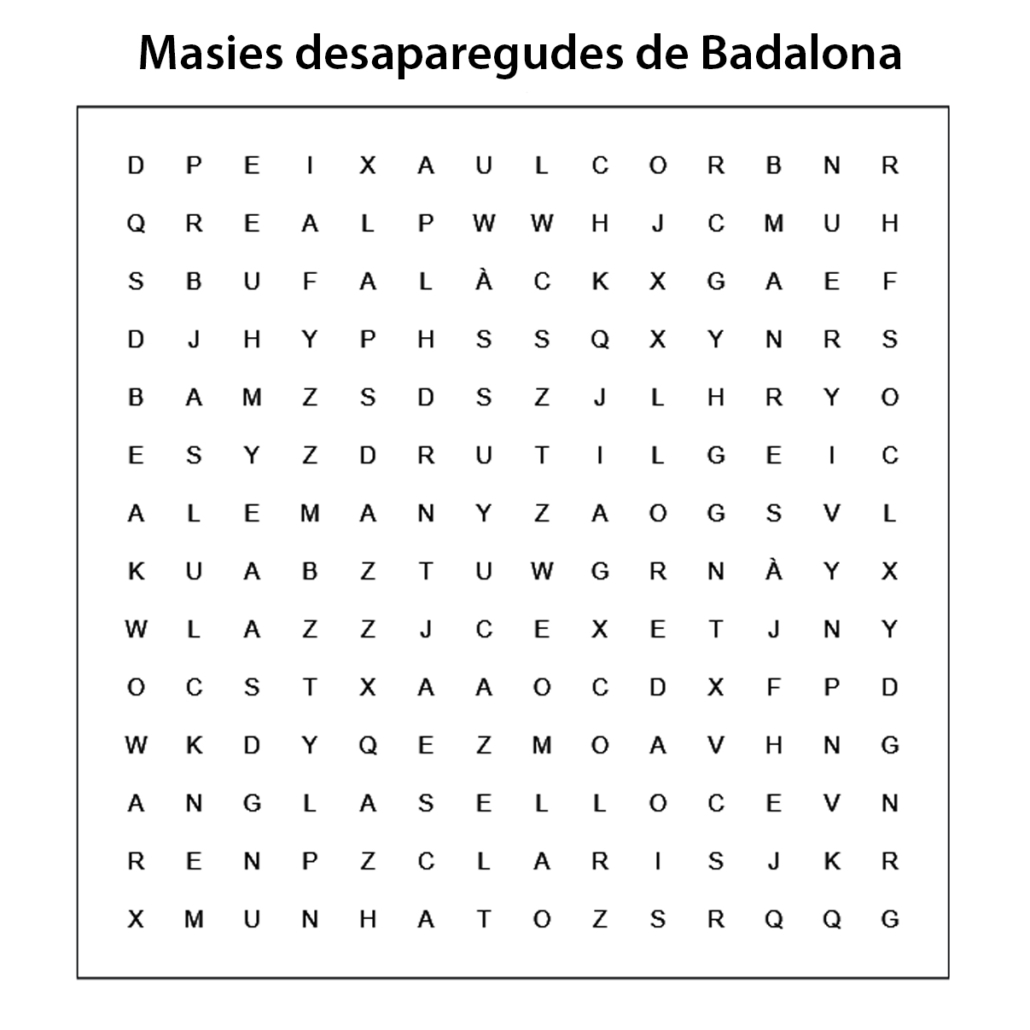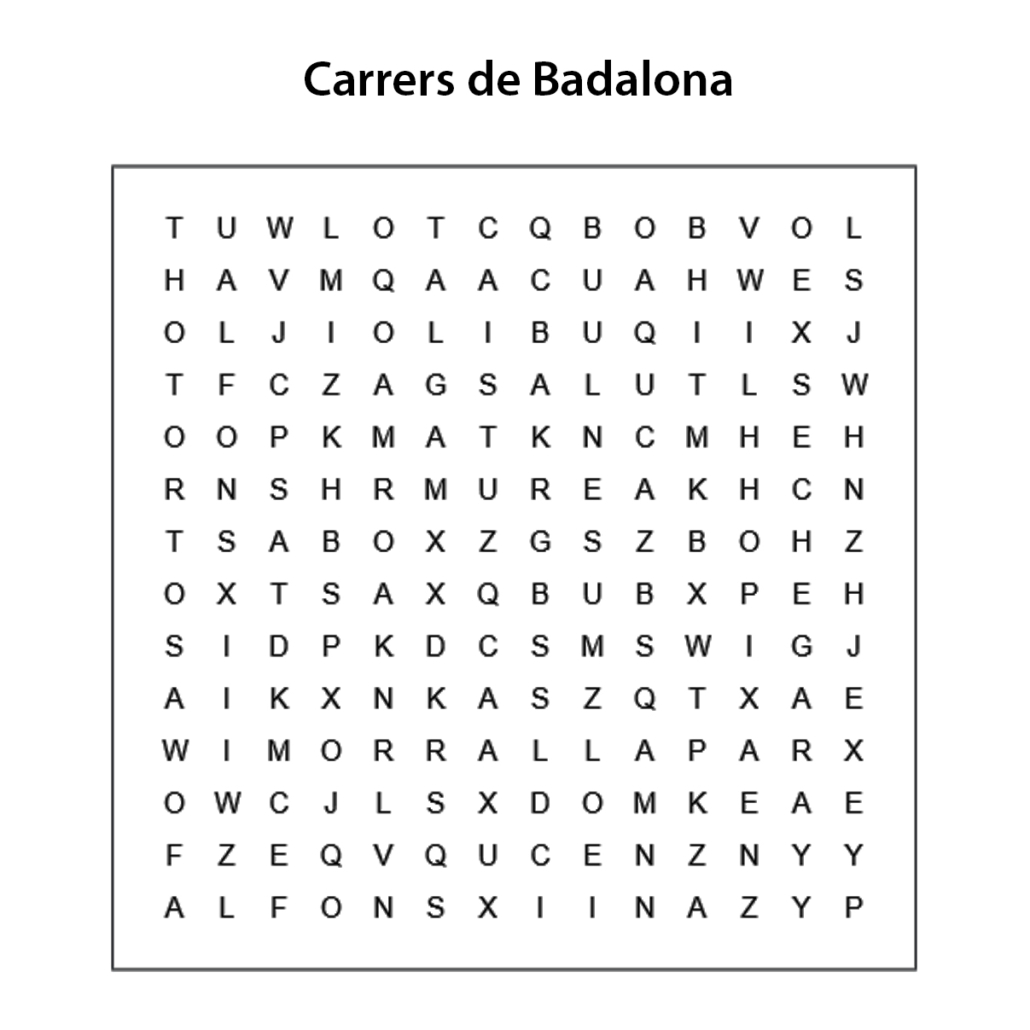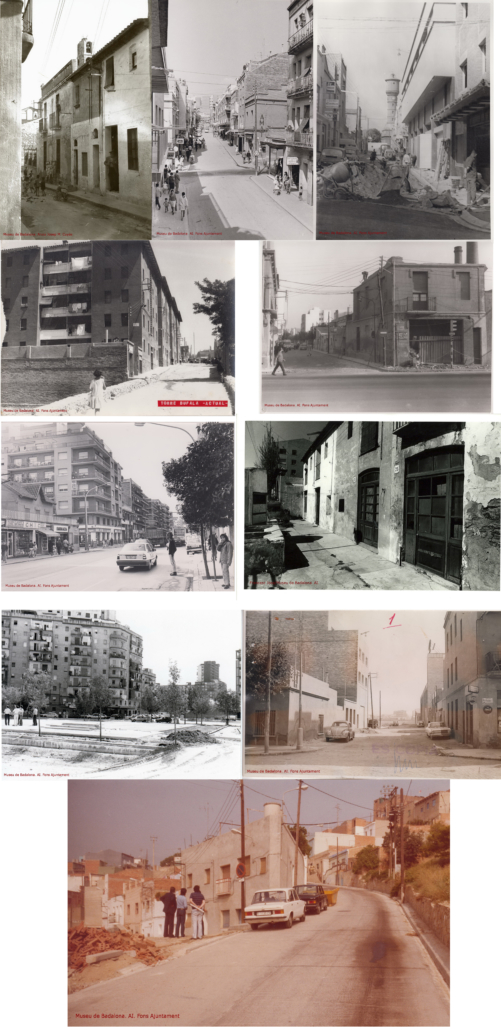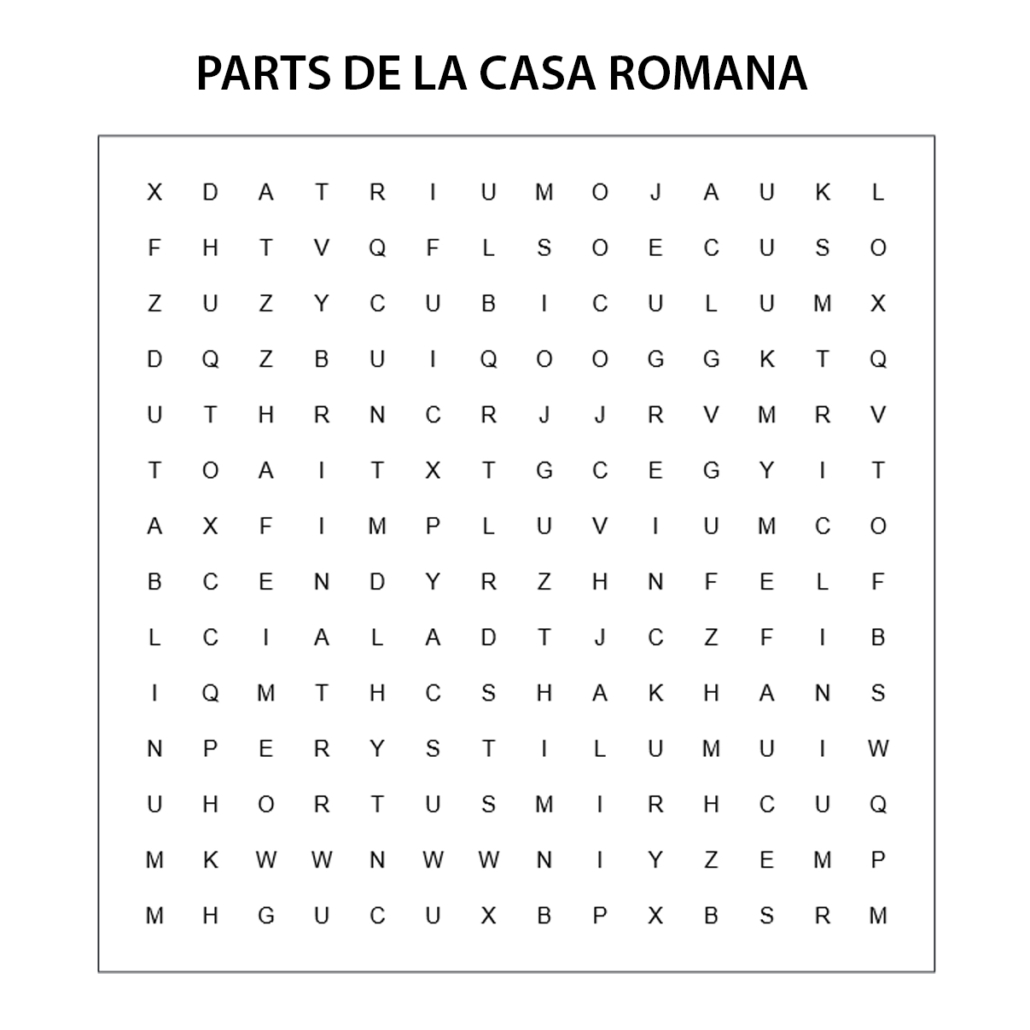Although the game we have been proposing to you during this confinement, “Did you know that …?” is over, we still offer you a lifelong entertainment: the alphabet soup. An entertaining way to rediscover interesting aspects of the city’s history and heritage.
Here you can download all the alphabet soups we have been proposing to you with their answers.
MAYORS OF BADALONA
Today is the last Friday of June. And with the month we finish another of the entertainments that we have been proposing you, periodically, along the confinement: the alphabet soup?
Today we invite you to recover the names of 10 MAYORS OF BADALONA of the nineteenth and twentieth centuries. Are you able to find them?
Download alphabet soup: http://ves.cat/eu3V
Download responses: http://ves.cat/eu3W
#QuizMuseubdn #Divendressopa #TornemalsMuseus #vinealMuseu #MuseuBdnonline

ARCHAEOLOGICAL CONCEPTS
Good Friday! You allready know that today, and throughout the weekend, we are celebrating the European Archeology Days, so we want to dedicate our alphabet soup of today to this science.
Could you find TEN CONCEPTS linked to an archaeological excavation in this soup? ?
Download soup: shorturl.at/adeoQ
Download response: shorturl.at/hCGX2
#QuizMuseubdn #Divendressopa #TornemalsMuseus #vinealMuseu # JEA2020 #MuseuBdnonline

ACTRESSES AND ACTORS
Good morning! We want to dedicate our Friday soup to a very glamorous profession, that of actress and actor.
You know that our city has an impressive roster of professionals dedicated to acting, both in the world of cinema and theater, but in this festival of convoluted letters we have only been able to hide 10 SURNAMES OF ACTRESSES AND ACTORS from Badalona, a small sample of the importance that this art has had – and has – in our city.
Are you able to find them?
Download word search: http://ves.cat/euM4
Download response: http://ves.cat/euQy
Have a great weekend!

INDUSTRIES OF BADALONA
We all know the important role our city played during industrialization. In the district of Badalona there were a large number of industries, of many different kinds.
Would you be able to find the names of 12 of these factories in this alphabet soup?
Download alphabet soup
Download response

ANISES OF BADALONA
We suggest that you test your knowledge of one of the most important industries in Badalona at the beginning of the 20th century: that of liqueurs and aniseed.
Would you be able to find in this mess 10 BRANDS OF ANISE made in Badalona?
Download alphabet soup
Download response

THE GOD BACCHUS
You already know that BACCHUS is the god of wine, theater and fertility, a deity closely related to the Roman city of Baetulo (now Badalona) which, in addition to having a theater, had the main source of wealth in the cultivation of the vineyard and the production and marketing of wine.
Today we propose you to rediscover Bacchus by locating in this mess of letters the NAMES OF 10 CHARACTERS that are related to life and Bacchic myths. Do you dare?

CINEMAS OF BADALONA
Today we suggest you find the names of 10 movie theaters of Badalona in our alphabet soup.

BADALONA FARMHOUSES
Can you locate 10 names of missing Badalona farmhouses?
Download alphabet soup
Download response

PARTS OF THE ROMAN HOUSE
Can you find the 10 spaces of a Roman house in this alphabet soup?
ROMAN GODS
Can you find the names of the Roman gods hidden in these crossword puzzles?
Download crossword puzzle
Download response
STREETS OF BADALONA
Find 10 names of the streets of Badalona that appear in these photographs from the Image Archive of the Museum of Badalona.


CARICATURES OF JAUME PASSARELL
Find the SURNAME of the TEN CHARACTERS that appear in these caricatures made by the Badalona cartoonist Jaume Passarell (1889-1975).

OLD STORES OF BADALONA
In the middle of this mess of letters are hidden 10 names of historic shops in Badalona, can you find them?
























